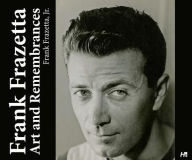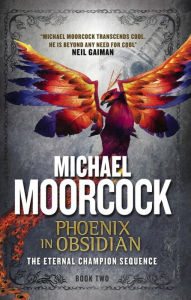The Taxonomy of Crazy Fantasy Art: A Visual History of 1970s Polar Bear-Drawn Sleighs
Frank Frazetta: Art and Remembrances
Frank Frazetta: Art and Remembrances
By
Frank Frazetta, Jr.
Editor
Daniel Herman
Artist
Frank Frazetta
Hardcover $49.99
The book covers and album art of Frank Frazetta remain some of the most well-known in fantasy and sci-fi pulp. His takes on bare-chested heroes like John Carter, Tarzan, and Conan cemented his talent for musculature accuracy within kinetic action scenes. Alongside most modern superheroes, his heroes and heroines are refreshingly lifelike.
Frazetta’s dioramas and character portraits endure thanks to his understanding of visual balance—a trait that even extends to his name. Born “Frazzetta,” he trimmed out one z early in his career, saying that “the two z’s and two t’s [were] too clumsy.”
His flair for making a scene look right sometimes eclipsed his desire to make it literally function correctly, as in the case of one of his more famous pieces. Let’s take a look at why it works anyway.
This illustration was created for the original edition of Michael Moorcock’s 1970 novel Phoenix in Obsidian, which was also titled The Silver Warriors, and features the Count Urlik Skarsol as he leads a polar bear-drawn chariot across an icy wasteland.
Note the harnesses. Or the lack of them. To the dismay of any fantasy-loving engineers, Frazetta is entirely unconcerned with the nitty-gritty of his transport. To be fair, anyone who picks the polar bear as their beast of burden is clearly more concerned about looking hardcore than they are about basic logic.
Count Skarsol and his unrealistic sleigh returned in the 1979 graphic novel The Swords Of Heaven, The Flowers Of Hell. Respected comics artist Howard Chaykin illustrated, crafting one full-page panel to replicate Skarsol’s vehicle of choice.
The harnesses make an appearance hooked to inner tube-sized bear collars, though now the rest of the sleigh is hidden in the snow. While Chaykin’s visual chops and design skill are well-documented in the pages of this novel—as well as in his zesty run of 1970s Star Wars comics—his sleigh isn’t the instant classic that Frazetta’s was.
The book covers and album art of Frank Frazetta remain some of the most well-known in fantasy and sci-fi pulp. His takes on bare-chested heroes like John Carter, Tarzan, and Conan cemented his talent for musculature accuracy within kinetic action scenes. Alongside most modern superheroes, his heroes and heroines are refreshingly lifelike.
Frazetta’s dioramas and character portraits endure thanks to his understanding of visual balance—a trait that even extends to his name. Born “Frazzetta,” he trimmed out one z early in his career, saying that “the two z’s and two t’s [were] too clumsy.”
His flair for making a scene look right sometimes eclipsed his desire to make it literally function correctly, as in the case of one of his more famous pieces. Let’s take a look at why it works anyway.
This illustration was created for the original edition of Michael Moorcock’s 1970 novel Phoenix in Obsidian, which was also titled The Silver Warriors, and features the Count Urlik Skarsol as he leads a polar bear-drawn chariot across an icy wasteland.
Note the harnesses. Or the lack of them. To the dismay of any fantasy-loving engineers, Frazetta is entirely unconcerned with the nitty-gritty of his transport. To be fair, anyone who picks the polar bear as their beast of burden is clearly more concerned about looking hardcore than they are about basic logic.
Count Skarsol and his unrealistic sleigh returned in the 1979 graphic novel The Swords Of Heaven, The Flowers Of Hell. Respected comics artist Howard Chaykin illustrated, crafting one full-page panel to replicate Skarsol’s vehicle of choice.
The harnesses make an appearance hooked to inner tube-sized bear collars, though now the rest of the sleigh is hidden in the snow. While Chaykin’s visual chops and design skill are well-documented in the pages of this novel—as well as in his zesty run of 1970s Star Wars comics—his sleigh isn’t the instant classic that Frazetta’s was.
Phoenix in Obsidian: The Eternal Champion Sequence 2
Phoenix in Obsidian: The Eternal Champion Sequence 2
Paperback $9.95
As one blogger at the Ragged Claws Network puts it, “Chaykin’s attempt to supply Urlik Skarsol’s polar bear team with a semi-plausible harness […] actually diminishes rather than enhances Frazetta’s gloriously silly original concept by drawing undue attention to the mundane question of how, exactly, the fantasy hero’s cool mode of transportation could be made to work in the real world and whether Chaykin’s design is, in fact, a viable solution.”
Polar bears have been ridden since, as the His Dark Materials trilogy ensured, but I haven’t seen any bear-drawn sleighs dashing through the snow, polar or otherwise (Those who want to prove me wrong may form an orderly line in the comments).
If there’s a moral to be taken from this incredibly specific visual history, it’s to embrace the idiosyncrasies of crazy fantasy art. There’s no need to bother harnessing your bear steeds when a simple dead-eyed stare and a menacing grip on your bloodied sword will do the trick.
What’s your favorite illogical piece of fantasy art?
As one blogger at the Ragged Claws Network puts it, “Chaykin’s attempt to supply Urlik Skarsol’s polar bear team with a semi-plausible harness […] actually diminishes rather than enhances Frazetta’s gloriously silly original concept by drawing undue attention to the mundane question of how, exactly, the fantasy hero’s cool mode of transportation could be made to work in the real world and whether Chaykin’s design is, in fact, a viable solution.”
Polar bears have been ridden since, as the His Dark Materials trilogy ensured, but I haven’t seen any bear-drawn sleighs dashing through the snow, polar or otherwise (Those who want to prove me wrong may form an orderly line in the comments).
If there’s a moral to be taken from this incredibly specific visual history, it’s to embrace the idiosyncrasies of crazy fantasy art. There’s no need to bother harnessing your bear steeds when a simple dead-eyed stare and a menacing grip on your bloodied sword will do the trick.
What’s your favorite illogical piece of fantasy art?

